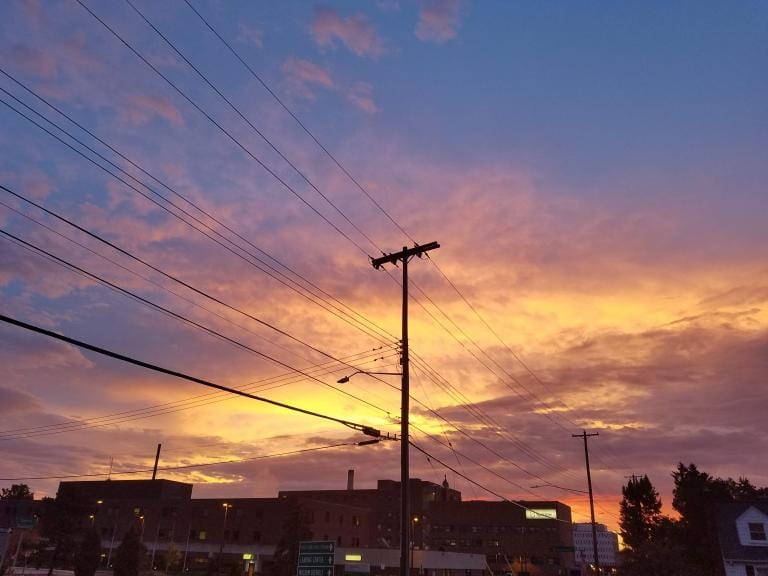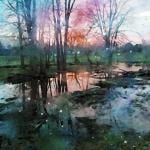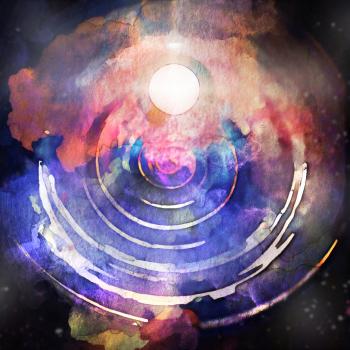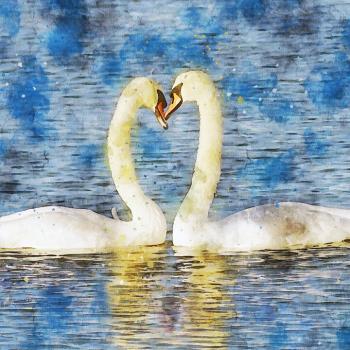Beltane is often connected to sacred sexuality and fertility. It’s one of those holidays that lends itself to large gatherings filled with potlucks, maypoles, and campouts. I remember a number of memorable occasions where we all set up tents on a friend’s land and sang our way into the night, happily ignoring the cold frosty morning that was waiting for us in the frigid Michigan spring. Sometimes you need something simpler, whether because of the COVID-19 shutdown or because that kind of energy is just not right for you.
To you I’d recommend a surprisingly simple and effective practice to start:
Create a local pilgrimage.
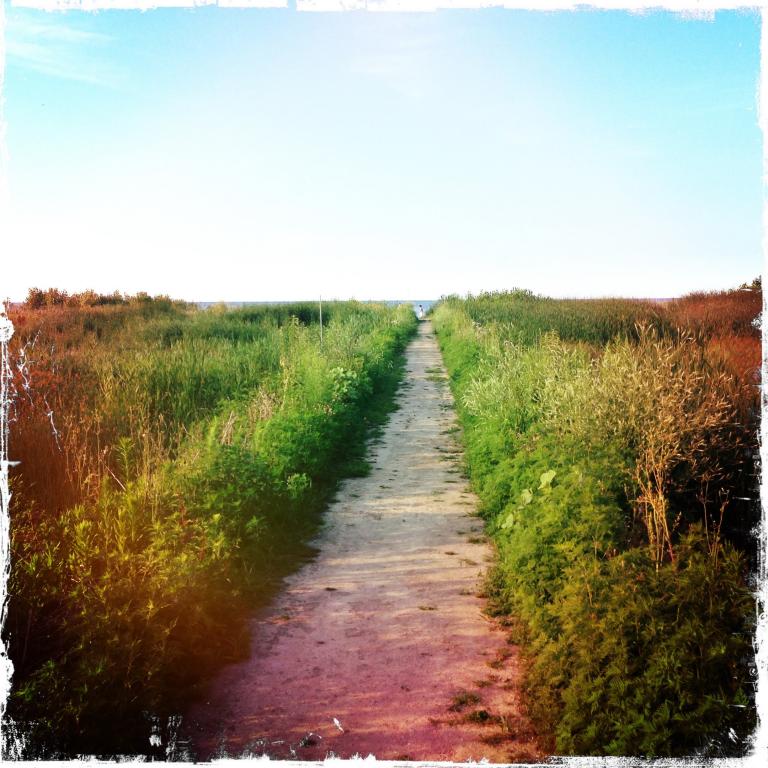
This is a practice I highly recommend to everyone. Create your own sacred journeys. These journeys don’t have to be vast, though they can be. Any journey can be a transformative process, even one close to home. As modern humans, we are used to having instant transport to wherever we can afford to go. Plane flights go across the country or globe, car trips take us to neighboring cities, or states. We go where we want when we want. It makes the process of traveling mundane.
The pilgrimage is a part of many important religions, including the Islamic Hajj to Mecca and Catholics traveling to visit sites sacred to saints. Many pagans view traveling to St. Brighid’s perpetual flame to be a sacred pilgrimage. The process of movement is a deeply humanizing thing. It is one of the things our
species evolved to do: we filled a niche where we travel long distances on two legs rather than four. To travel is to be human. And yet, though we can travel vast distances, should we? The horizon of humanity shows that we can do a great many things. However, traveling takes a toll on planetary resources, and especially right now, during an epidemic is not a good idea. In 7th century Japan, gardens were created as miniature landscapes for the nobles to walk through. That art form developed a complicated symbolic language of miniature trees, rocks as mountains, and pebbles as rivers seen in modern Japanese gardens. We can take a page from their book by enjoying our own local landscapes.
I’ve used local pilgrimage to deepen my relationship to the local river spirit, to create walking trance pathways that help me to connect with specific otherworldly realms, to discover sacred spaces and divine what spirits live there, to learn more about local botany, identify species, and create a connection with animals. During pilgrimage with my children, we have learned a Deer Dance, Fox Dance, Turkey Dance, how to talk to Squirrels, and practiced our bird language. By choosing and sticking with a walking path and schedule you can increase your willpower, focus, and drive.
How to Create a Local Pilgrimage:
Chose a route that is close to home and has interesting features such as rivers, gardens, or forests:
Pick a route that is close to where you live and work possibly at a nature center, or along a path that connects with your local river, or particular trees. Walk this path frequently. Choose or discover holy places along the way. The crotch of a three boled tree, a rock that juts into the river and creates water vortexes which are natural mandalas, the liminal moment of being on a bridge over running water. The possibilities are endless. The most important thing is to practice mindfulness and attention along the way so you are able to notice what spots resonate with you.
Beltane is a lovely time of year to be walking, and right now with the shutdown, it is one of the things we can do to get exercise and a little sun. Make sure to practice social distancing and if you can, wear a face mask, just in case you have COVID-19 and don’t even know it. Here in Michigan the daffodils and violets are blooming, the cherry trees are just starting to bloom, and the tulips are peeking their little green heads up to get ready for their show in just a week or two.
Have a thoughtful and meditative mindset:
This is not the time for lots of talking or chatter. This is a time to listen to the other species that surround us. Practice listening to the wind, looking at the clouds, noticing the tiny spring flowers. Even in the city, there are many species of wild spring flowers, including violets, dandelions, cranesbill, and even the tiny chickweed with its beautiful Latin name: Stellaria media, meaning “middle star”. Walking meditation is a kind of meditation where you are focused on the experience. Use your sensory awareness to tune in to the world around you. I find it is also a good time to practice non-judgment. As I have walked, a car honking or an angry squirrel might disturb my quiet. I have an urge to see this as a bad thing, an intrusion. It is not. It’s simply part of the experience, and the human driving that car is a part of the earth too. Note the wind, the clouds, the behavior of the animals, the patterns and distribution of plant growth, the patterns and sounds of water. All these beings are teachers.
It is better to accept that you don’t know what they are trying to teach than to go into it thinking you know the lesson, so rather than elucidate the lesson I will simply say: listen.
Deepen the Practice Through Repetition:
To walk in a mindful and spiritual manner anyplace is a good thing. It helps you move out of me-ness and into us-ness while practicing staying rooted in your own awareness. You can also gain other gifts by choosing to go many times to one location or along a certain path. Doing so will give you the gift of change. You can begin to learn how the color of the sky changes through the year, what the budding oak looks like, the ways of the ducks, how the plants live and die. By rooting into awareness in one location, you discover how the tides of the earth change Her through her cycles.
Learn the Languages of the Animals:
I mentioned that I had learned a Deer Dance walking with my children. I meant that. We were watching a small group of local deer and decided to slowly get closer. We watched how they looked at us and what they did. We carefully mimicked their behavior and discovered a specific repetition of gesture, movement, and eye contact. It was like learning a dance. We were able to walk so close to the deer that we became uncomfortable and decided to not go any closer ourselves. We were a mere few yards away in a grassy field with no cover. Mimicry is how babies learn human language, and it’s how we can begin to learn the language of other beings as well. I’m pretty sure you’ll learn cuss words first when speaking Squirrel, and often times body language is the most important thing. It’s very different for those of us who are used to words. Try mimicking bird song and see if you can get them to respond to you. There is nothing like being part of a multi-species conversation.
Expand Your Pilgrimage with Divination and Shrine Making:
If you have been walking a pilgrimage for some time and know a place well, there are more ways to take the work deeper still. Andy Goldsworthy was the founder of the Land Art Movement. This is the idea that you can make beautiful and meaningful art out of the most basic materials of nature simply by arranging them. Now, I will say, if you are not wise about this you can destroy ecosystems and damage plants, but moving fallen leaves does no harm. Arranging sticks into a pentagram or other geometry is beautiful and meaningful. These simple shrines built in places you’ve come to love can be powerful reminders of the holiness of all beings. I also recommend doing simple yes no divination before creating shrines in order to allow the spirit of place to assert their opinion. A simple three-card tarot reading where three up is yes, and three down is no can work well. For the two up, I would suggest that there is a task or a reason to delay that you will have to discover before you begin your shrine making.
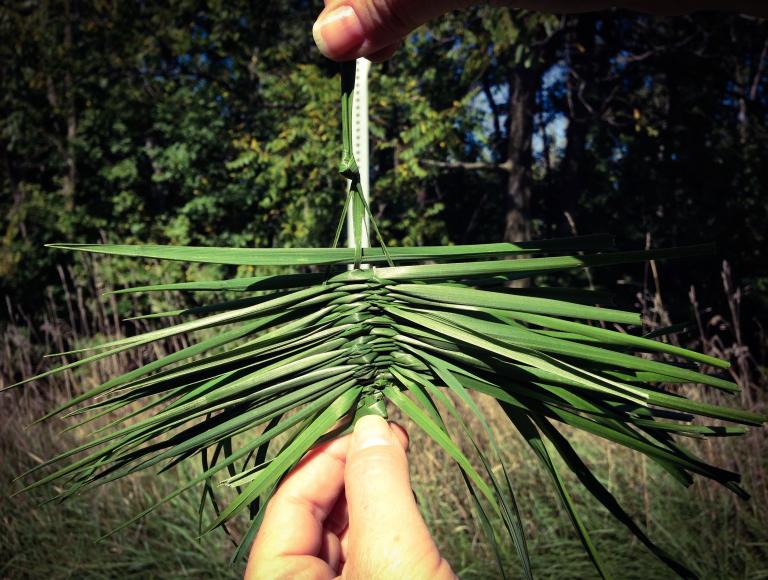
Finding a Way:
Deep observation is key to this practice. Try walking meditation where you count your breaths, don’t wear earbuds if you can avoid it. Look around as you walk. Take identification guides if you like to learn more about plants and animals. Try walking quickly and slowly, sit and take breaks, revisit locations that are meaningful to you. Note omens and do divination to allow the land to speak back to you, and write down what you learn so you don’t forget it. Good luck. May the spirits of the land learn your name and may you learn theirs.
If you would like to support my writing and research, please consider becoming a Patreon if you can afford to do so. May the gods and spirits watch over all of us in this difficult time. Blessed be.

